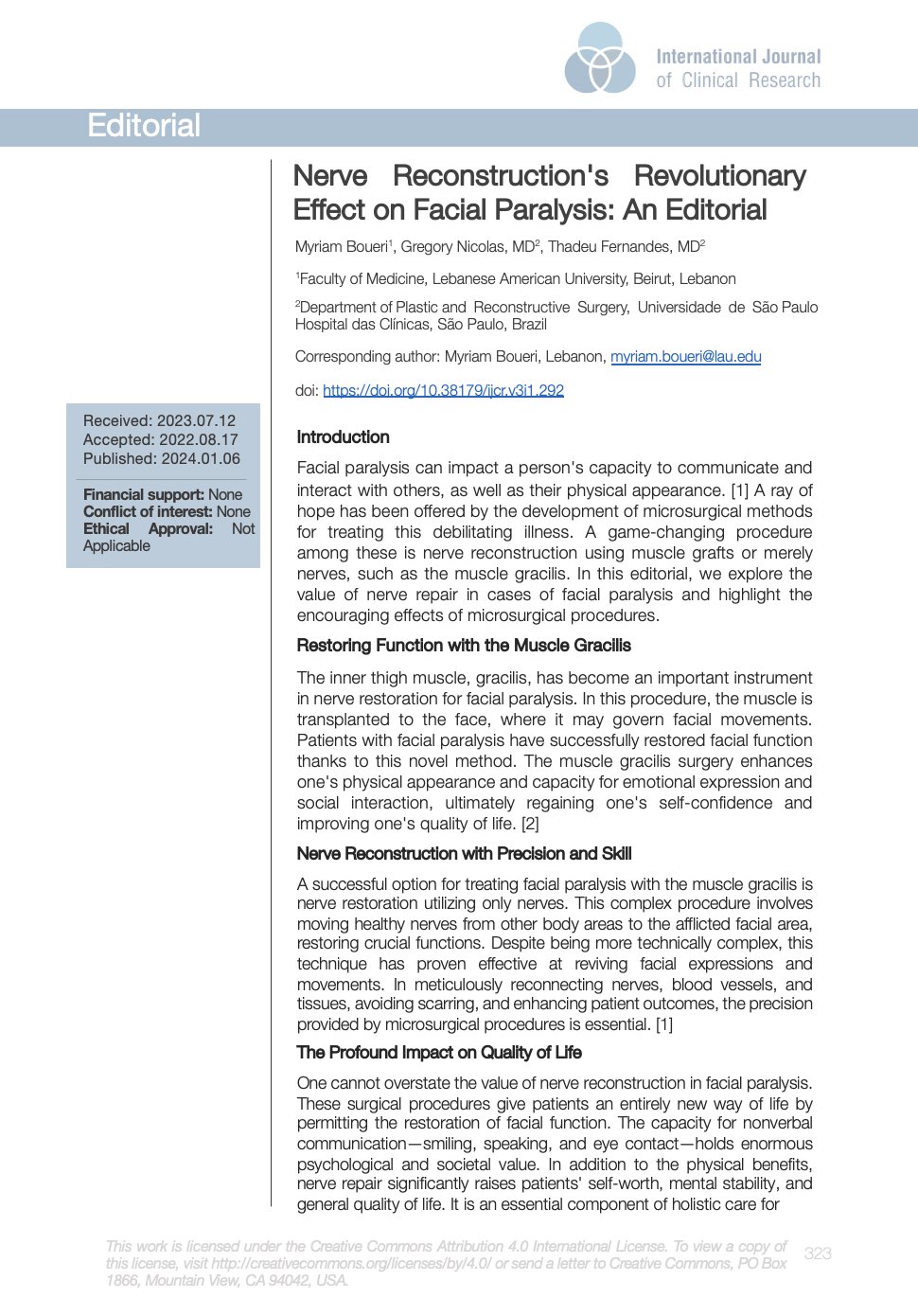Nerve Reconstruction's Revolutionary Effect on Facial Paralysis: An Editorial
DOI:
https://doi.org/10.38179/ijcr.v3i1.292Keywords:
Plastic surgery, nerve reconstruction, facial paralysis, microsurgery techniquesAbstract
Introduction: Facial paralysis can impact a person's capacity to communicate and interact with others, as well as their physical appearance. [1] A ray of hope has been offered by the development of microsurgical methods for treating this debilitating illness. A game-changing procedure among these is nerve reconstruction using muscle grafts or merely nerves, such as the muscle gracilis. In this editorial, we explore the value of nerve repair in cases of facial paralysis and highlight the encouraging effects of microsurgical procedures.
References
Exploring Patient Experience of Facial Nerve Palsy to... : Plastic and Reconstructive Surgery – Global Open. LWW. https://doi.org/10.1097/gox.0000000000002072 . PMID: 30859034
The Success of Free Gracilis Muscle Transfer to Restore... : Annals of Plastic Surgery. LWW. https://doi.org/10.1097/sap.0b013e3182a0df04 . PMID: 24051452
Mehta RP. Surgical Treatment of Facial Paralysis. Clin Exp Otorhinolaryngol. 2009;2(1):1-5. https://doi.org/10.3342/ceo.2009.2.1.1 . PMID: 19434284
Leckenby J, Grobbelaar A. Smile Restoration for Permanent Facial Paralysis. Archives of Plastic Surgery. 2013;40(5):633. https://doi.org/10.5999/aps.2013.40.5.633 . PMID: 24086823

Published
How to Cite
Issue
Section
Copyright (c) 2022 International Journal of Clinical Research

This work is licensed under a Creative Commons Attribution 4.0 International License.







